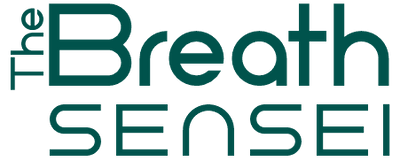It appears that your cart is currently empty
What is the Buteyko Breathing Method - Breathwork
0 comments
A Ukrainian doctor, Konstantin Buteyko, created the Buteyko breathing technique (BBT) in the 1950s. This therapeutic breathing method uses breath retention exercises to control the speed and volume of your breath. This helps you to learn to breathe more slowly, calmly, and effectively.
The benefits of Buteyko breathing include enhanced breath control, which helps to prevent breathlessness and promote proper breathing patterns. It’s used to manage and improve a variety of conditions, including asthma, anxiety, and sleep concerns.
Continue reading to learn more about the benefits of Buteyko breathing, how to do it, as well as considerations and alternatives.
Benefits of Buteyko Breathing
Many advantages of buteyko breathing include its capacity to increase nostril breathing, promote breath awareness, and prevent overbreathing.
By using the technique often, you'll learn how to breathe effectively, which can help avoid problems like wheezing, coughing, and feeling out of breath. It can also aid in clearing congested nasal passages and reducing needless coughing.
Regulates Breathing
For those who tend to overbreathe or hyperventilate—as is typical in those with disorders like anxiety and asthma—buteyko breathing is excellent.
Those who find it difficult to breathe while engaging in strenuous activities can also benefit from it. By encouraging deep sleep, lowering snoring, and treating sleep apnea, Buteyko breathing can also help reduce stress, enhance sports performance, and enhance sleep quality.
Helps With Asthma & Anxiety
Buteyko breathing is often used to treat and manage asthma since it helps to prevent overbreathing, which can be connected to the condition. Hyperventilation can lead to hypocapnia, which leads to low carbon dioxide levels.
Practicing BBT can help you learn to stabilize your breathing patterns by lowering your tidal volume and respiratory rate. It also helps to balance carbon dioxide levels and reduce anxiety.
Several older studies point to the effectiveness of Buteyko breathing in improving asthma symptoms. In a small 2000 study, people who did Buteyko breathing exercises by video improved their quality of life and reduced their need for bronchodilator intake more than the group who watched a placebo video.
Research from 2008 found that people who practiced Buteyko breathing were able to better control their asthma symptoms. They also reduced their need for inhaled corticosteroid therapy.
How To Do It
Buteyko breathing teaches you to breathe more gently and less rapidly. You’ll learn to breathe slower and deeper, which balances your breathing rhythms.
It involves exercises that teach you to hold your breath and refrain from breathing. It’s said that over time the breathing technique will become a natural part of your daily life.
Preparation
- Sit on the floor or on a chair.
- Elongate your spine to maintain an upright posture.
- Relax your respiration muscles.
- Breathe normally for a few minutes.
The Control Pause
- After a relaxed exhale, hold your breath.
- Use your index finger and thumb to plug your nose.
- Retain your breath until you feel the urge to breathe, which may include an involuntary movement of your diaphragm, and then inhale.
- Breathe normally for at least 10 seconds.
- Repeat several times.
The Maximum Pause
- After a relaxed exhale, hold your breath.
- Use your index finger and thumb to plug your nose.
- Retain your breath for as long as possible, which is usually twice the length of time of the Control Pause.
- Once you’ve reached the point of moderate discomfort, inhale.
- Breathe normally for at least 10 seconds.
- Repeat several times.
Tips For Beginners
When practicing Buteyko breathing, always breathe in and out through your nose.
If at any time you experience anxiety, shortness of breath, or intense discomfort, discontinue the practice and breathe normally.
As you progress, you may be able to hold your breath for longer periods. Over time, you may be able to hold the Control Pause for 1 minute and the Maximum Pause for 2 minutes.
Drawbacks of Buteyko Breathing
While Buteyko breathing has many benefits, it may not be suitable for everyone and it’s not a substitute for your doctor’s treatment plan. Always talk to your healthcare provider before beginning breathing exercises.
Avoid BBT if you have any of the following:
- Hypertension
- Heart disease
- Epilepsy
- A serious medical concern
Other Breathwork Options
Combining buteyko breathing with your previous therapies is a beneficial supplemental therapy. You can research clinical treatments if you have asthma or anxiety.
If the Buteyko breathing technique isn't right for you, you might want to try some other breathing techniques. You can still benefit from these techniques in terms of breathing patterns and general health.
Alternative methods of breathing include:
- 4-7-8 breathwork technique
- Box breathing
- Diaphragmatic breathing
- The Papworth method
- Nasal breathing
- Belly breathing
- Pursed-lip breathing
- Resonant breathing
Buteyko Breathing & Breathwork
The Buteyko breathing technique can enhance your health and well-being in many ways. It’s especially beneficial in improving asthma symptoms, reducing anxiety, and enhancing sleep quality.
You can learn to limit overbreathing in stressful or strenuous situations, helping you to breathe more easily and effectively. Plus, you may find it easier to relax.
Try a free breathwork course with The Breath Sensei today to see how breathwork courses can help with stress, anxiety, poor sleep, sporting performance, asthma & your general health & wellbeing!


0 comments